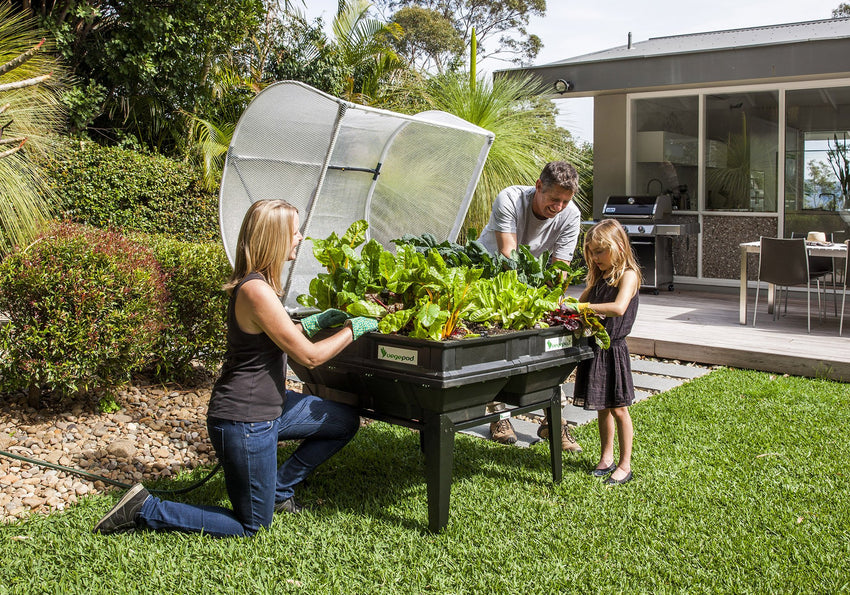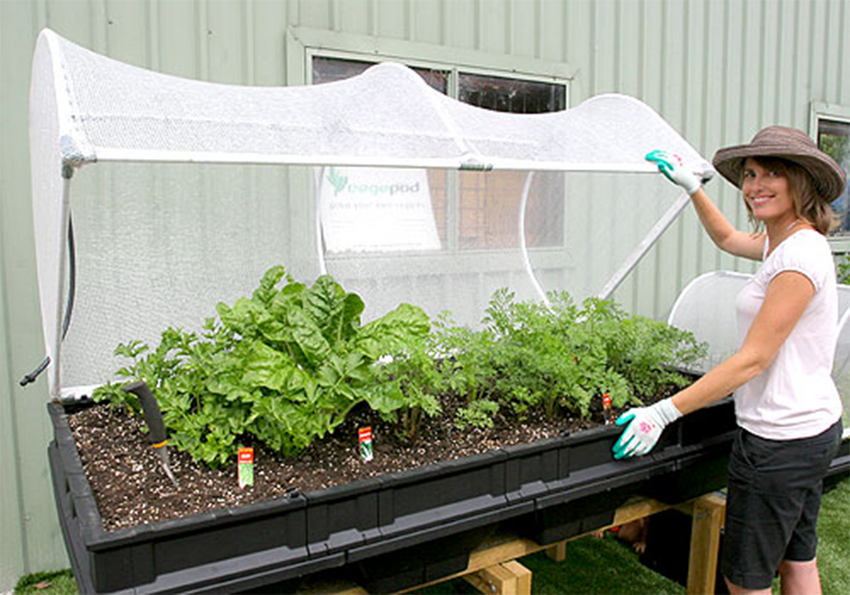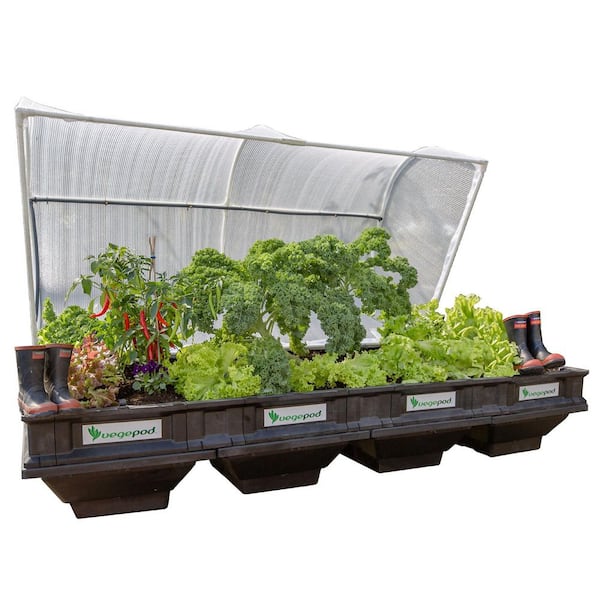Vegepod Raised Garden Beds: The Easiest Way To Grow Your Own Food
Vegepod Raised Garden Beds: The Easiest Way to Grow Your Own Food
Growing your own food is a great way to save money, eat healthier, and connect with nature. But it can also be a lot of work, especially if you don't have a lot of experience. That's where Vegepod raised garden beds come in.
Vegepods are self-watering, raised garden beds that make it easy to grow your own food. They're perfect for beginners, busy families, and anyone who wants to enjoy the benefits of gardening without all the hassle.
Here are just a few of the things that make Vegepods the easiest way to grow your own food:
- Self-watering system: Vegepods have a built-in self-watering system that keeps your plants hydrated without you having to water them every day. This means you can go away on vacation without having to worry about your plants.
- Raised design: Vegepods are raised off the ground, which makes them easier to access, especially for people with mobility issues. They also help to improve drainage and aeration, which is important for plant health.
- Durable materials: Vegepods are made from high-quality materials that are designed to last for years. The frame is made from powder-coated steel, and the liner is made from UV-resistant polyethylene.
- Versatile design: Vegepods can be used to grow a variety of vegetables, fruits, herbs, and flowers. They're also a great option for aquaponics, which is a method of growing plants and fish together in a symbiotic relationship.
If you're looking for an easy way to grow your own food, Vegepods are the perfect solution. They're convenient, versatile, and built to last.
[Main Content]
How Vegepods Work
Vegepods work using a wicking system. This means that water is stored in a reservoir at the bottom of the bed and then wicks up through the soil to the roots of the plants. This ensures that your plants are always getting the moisture they need, even when you're away on vacation.
The Vegepod frame is made from powder-coated steel, which is rust-resistant and durable. The liner is made from UV-resistant polyethylene, which will protect your plants from the sun's rays.
The Vegepod comes with a variety of features that make it easy to grow your own food, including:
- A built-in self-watering system
- A raised design for easy access
- Durable materials that are built to last
- A versatile design that can be used to grow a variety of plants
What You Can Grow in a Vegepod
Vegepods are a great option for growing a variety of vegetables, fruits, herbs, and flowers. Some of the most popular crops to grow in Vegepods include:
- Tomatoes
- Peppers
- Cucumbers
- Squash
- Carrots
- Lettuce
- Spinach
- Herbs
- Flowers
How to Set Up a Vegepod
Setting up a Vegepod is easy. Simply follow the instructions that come with your kit. The basic steps are as follows:
- Choose a location for your Vegepod. It should be in a sunny spot with good drainage.
- Level the ground where you're going to put your Vegepod.
- Assemble the Vegepod frame.
- Add the liner.
- Fill the bed with soil.
- Plant your seeds or seedlings.
- Water your plants and enjoy!
Tips for Growing in a Vegepod
Here are a few tips for growing in a Vegepod:
- Water your plants regularly, especially during hot weather.
- Fertilize your plants every few weeks.
- Harvest your crops when they're ripe.
- Protect your plants from pests and diseases.
Conclusion
Vegepods are the easiest way to grow your own food. They're convenient, versatile, and built to last. If you're looking for a way to save money, eat healthier, and connect with nature, Vegepods are the perfect solution.
If you're looking for a convenient and easy way to grow your own vegetables, then a Vegepod raised garden bed is the perfect solution for you. Vegepods are self-watering and contain all the nutrients your plants need, so you don't have to worry about watering or fertilizing them. They're also elevated, so they're easy to reach and maintain, and they can be used in any climate.
To learn more about Vegepods, visit Garden Wiki. You can read about the different sizes and features available, watch videos of Vegepods in action, and find out what other customers have to say. You can also order your Vegepod directly from the website.
FAQ of vegepod raised garden beds
- What are the features of a Vegepod?
A Vegepod is a self-watering raised garden bed that uses a wicking system to keep the soil moist. The wick is the soil or perlite that is in contact with the water in the reservoir at the base of the garden bed. Soil uses a capillary action to draw the water upwards, keeping the soil moist for up to 2 weeks without the need for manual watering. Vegepods are also made from recycled materials and are designed to be durable and long-lasting.
- Why is a Vegepod important?
There are many reasons why a Vegepod is important. First, it is a self-watering garden bed, which means that you do not have to worry about watering your plants as often. This can save you time and energy, especially during the hot summer months. Second, Vegepods are made from recycled materials, which makes them more sustainable than traditional raised garden beds. Third, Vegepods are designed to be durable and long-lasting, so you can enjoy them for many years to come.
- How much space does a Vegepod need?
A Vegepod takes up a relatively small amount of space. The standard Vegepod is 4 feet wide, 2 feet deep, and 2 feet tall. This means that it can fit in even a small yard or balcony. If you have more space, you can also purchase a larger Vegepod.
- What plants can I grow in a Vegepod?
You can grow a variety of plants in a Vegepod, including vegetables, herbs, and flowers. Some popular Vegepod plants include tomatoes, cucumbers, peppers, lettuce, carrots, herbs, and strawberries.
- How much does a Vegepod cost?
The cost of a Vegepod varies depending on the size and model. The standard Vegepod costs around \$400. If you are looking for a larger Vegepod, or if you want to purchase a Vegepod with additional features, such as a greenhouse lid, the cost will be higher.
Image of vegepod raised garden beds
Here are 5 different images of Vegepod raised garden beds from Pinterest:
- A Vegepod raised garden bed in a backyard. The bed is made of dark brown wood and has a white plastic liner. There are several plants growing in the bed, including tomatoes, cucumbers, and peppers.

- A Vegepod raised garden bed on a patio. The bed is made of light brown wood and has a clear plastic liner. There are several herbs growing in the bed, including basil, parsley, and thyme.

- A Vegepod raised garden bed in a greenhouse. The bed is made of white wood and has a black plastic liner. There are several leafy greens growing in the bed, including lettuce, kale, and spinach.

- A Vegepod raised garden bed in a container. The bed is made of black plastic and has a clear plastic liner. There are several tomatoes growing in the bed.

- A Vegepod raised garden bed with a grow light. The bed is made of light brown wood and has a clear plastic liner. There are several plants growing in the bed, including tomatoes, cucumbers, and peppers. The bed is also equipped with a grow light, which helps the plants to grow even in the winter.

Post a Comment for "Vegepod Raised Garden Beds: The Easiest Way To Grow Your Own Food"